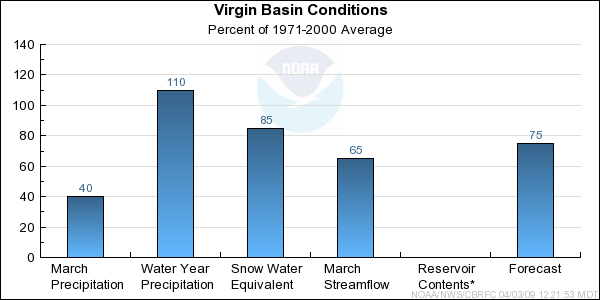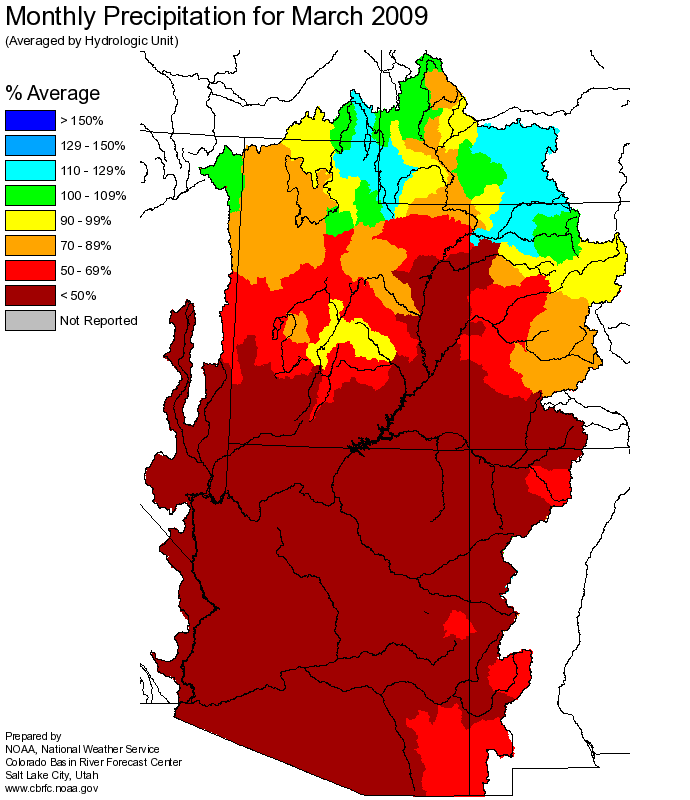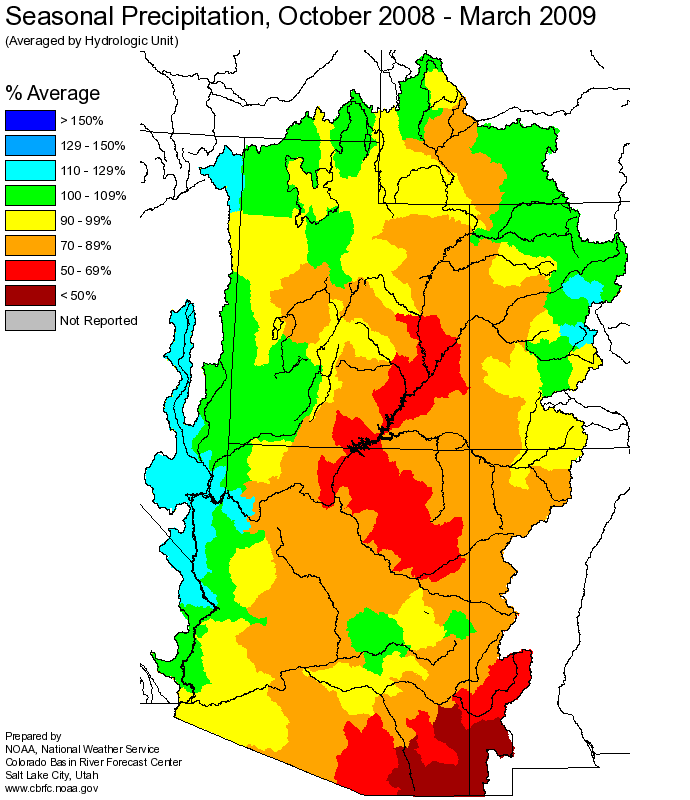Model Soil Moisture/Observed Streamflow - Dry weather in the late summer and fall created below
average soil moisture conditions in the Virgin River Basin heading into the winter season.
Below average streamflow has been observed throughout the winter months. Despite significant snow
melt below the 8000 ft elevation level, March streamflow volumes were below to much below average.
Snowpack/Precipitation - Precipitation in the upper Virgin River Basin was near 40 percent of
average for March. Seasonal precipitation is near 110 percent of average. While lower elevations
below 8000 feet experienced snow melt, higher elevations experienced both losses and gains to
the snowpack during March. Snowpack at the higher elevations as of April 1st ranged from 95
to 105 percent of average. The latest snowpack conditions can be found here:
snowpack conditions.
General Discussion/Forecasts - Seasonal volume forecasts have been lowered from those issued in
March. April through July runoff volumes are expected to range from 55 to 80 percent of average,
which equates to 100 to 120 percent of the 1971-2000 median values.
Apr-Jul runoff volumes in the Virgin River Basin are expected to range from near 55 to 80 percent
of the average (100 to 120 percent of median).
Differences between the full period forecasts and the residual forecasts may not exactly equal the actual observed volumes due to rounding conventions (see Definitions section).





